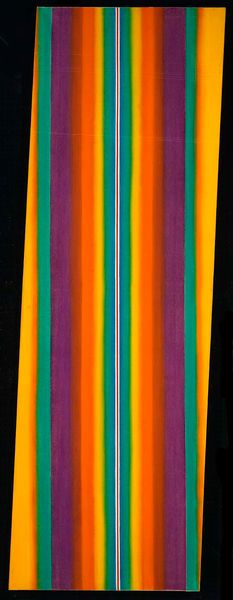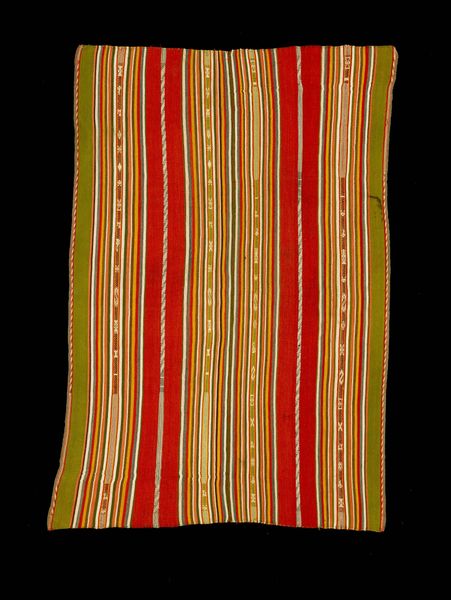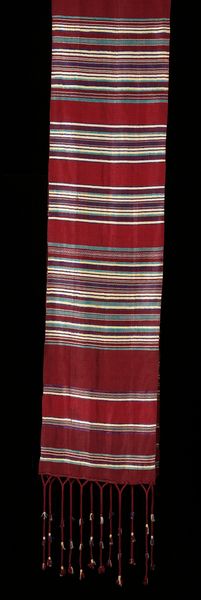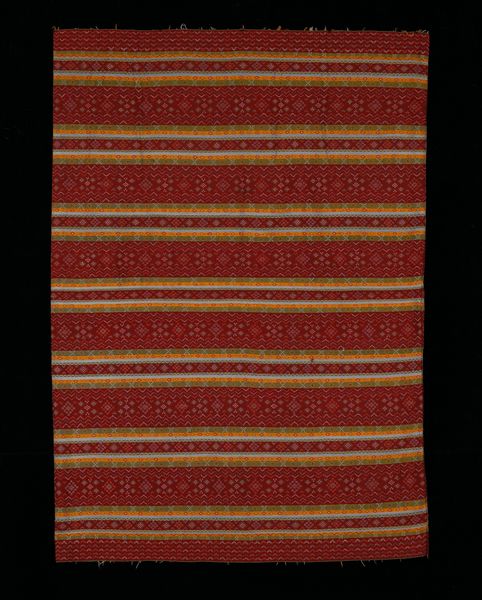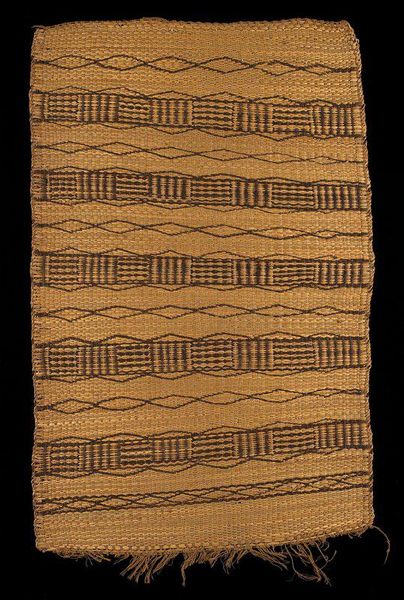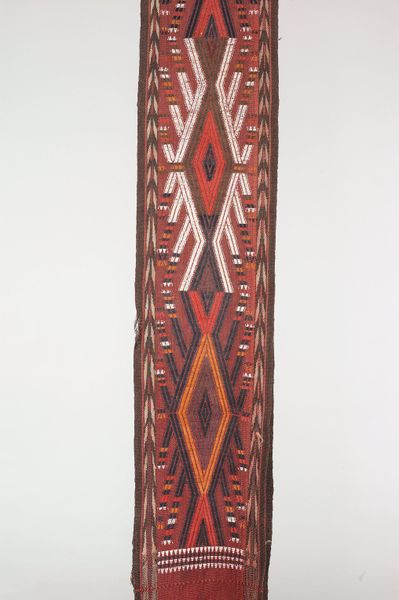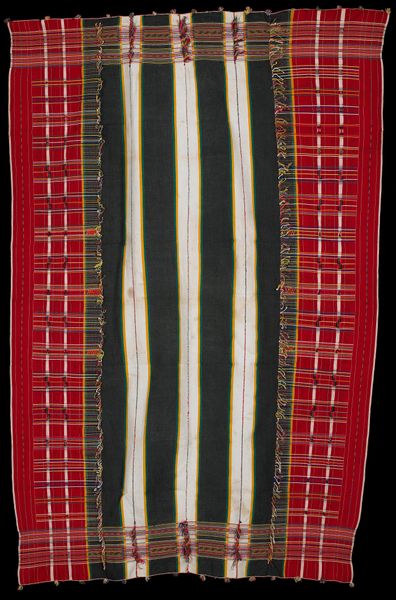
weaving, textile
#
weaving
#
textile
#
geometric
#
decorative-art
#
indigenous-americas
Dimensions: 141.6 × 7.6 cm (55 3/4 × 3 in.)
Copyright: Public Domain
Curator: Let's discuss this Nazca headband, a textile estimated to be from 100 to 200 CE. It is currently held at The Art Institute of Chicago. Editor: What strikes me first is how remarkably vibrant the colors remain. It's a bold zigzag, quite playful, considering its age. Curator: Indeed. It invites one to think about the processes, the sheer labor invested. Dyes extracted from plants, insects, or minerals...The act of weaving, repetitive, meticulous, embodies the dedication of its maker, and perhaps the whole community behind the artwork itself. What function does it carry and how is it consumed, one might think. Editor: Agreed. Beyond labor, I'm curious about what those colors and geometric forms meant to the Nazca people. The repetition of the zigzag pattern…was it simply decorative, or did it symbolize something deeper about their worldview, perhaps a cyclical aspect of time or natural events? We could ask whether those color convey associated symbolic value or meaning? Curator: A great question! What dyes were locally sourced, what level of time and dedication were involved? Such choices speak volumes. What social classes would have owned this piece? These questions lead into other types of explorations than symbolism, for me anyway. Editor: Possibly… But seeing the artefact today in an encyclopedic museum setting invites to ponder what might it meant at the time and still carry today with these patterns, colors, forms. Colors possess complex social symbolism throughout history, don't they? This weaving speaks about time and place; how meaning could emerge at some point with no straightforward answer today... Curator: No debate on that point, memory exists with materials, place of production has value in that act. One can learn a great deal through the materiality alone. This headband tells stories of its construction, of ancient dyes, tools, of hands working repetitively on what might appear simple to us. That process-oriented examination seems a place where knowledge resides. Editor: True, an interdisciplinary dialogue allows for a deeper knowledge acquisition and greater cultural understanding around such piece... Curator: Precisely! This conversation has enriched my vision of this object today. Editor: Same here; these vibrant artifacts prompt more thought regarding human universals, in my opinion.
Comments
No comments
Be the first to comment and join the conversation on the ultimate creative platform.

